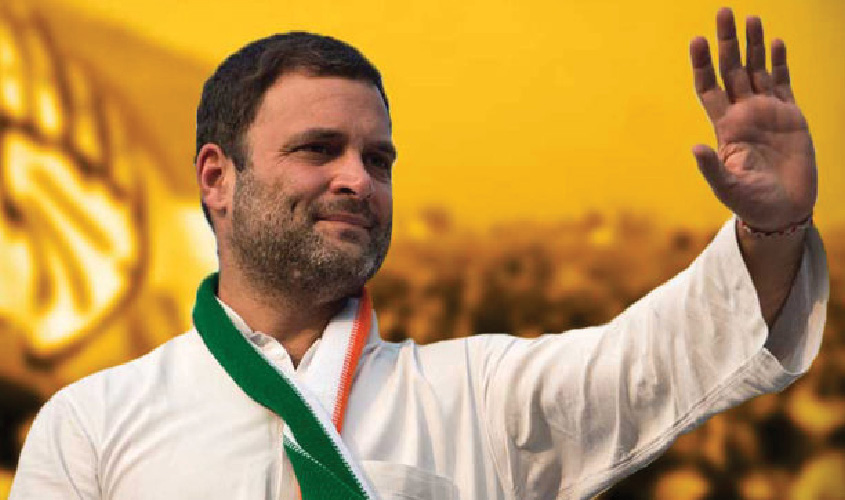One can only comment that the stars have been benevolent for Congress president Rahul Gandhi and no terrible mishap occurred on Thursday while he was travelling from New Delhi to Hubli; this despite the fact that the aircraft developed a technical snag, leading to a “frightening and uncommon situation” that possibly could have had life-threatening ramifications. The Congress party has filed a complaint with the state police alleging “intentional tampering” as a result of a conspiracy. On the other hand, the Directorate General of Civil Aviation (DGCA) has ordered an inquiry maintaining that there could have been a defect in the auto-pilot mode. The inquiry is expected to be completed in two weeks, and sources conjectured how such an episode could happen to a protectee of the Special Protection Group (SPG).
Rahul’s key-aide, Kaushal Vidyarthee, who was accompanying him along with three others, said that the entire experience had left the passengers “with a lot of anxiety and distress positively fearing for their lives”. Though the climatic conditions were perfect, the plane tilted heavily on one side, causing a sudden altitudinal drop. All this while Rahul, who holds a commercial pilot’s licence, stood by the pilots, maintaining calm composure in a bid to make light the panic situation. The aircraft, after two failed attempts, finally landed safely in Hubli.
The frightful occurrence created a huge flutter in political circles, and Prime Minister Narendra Modi also phoned Rahul to enquire about his well being. Several party leaders observed that it could very well have been an attempt on the life of the Congress president, whose father and grandmother were victims of well-planned political assassinations. The truth may only come out if the inquiry is conducted with the required fairness and objectivity.
In our country, as well as in other nations assassinations, as an instrument of revenge, or for settling ideological battles, have been often used by unscrupulous elements. On 30 January 1948, Mahatma Gandhi became the first victim of post Independent India when he was shot dead from point blank range by Nathuram Godse, described as a Hindu fanatic in New Delhi at the Birla House. Godse was eventually sentenced to death, and sent to the gallows. On 31 October 1984, Indira Gandhi was similarly gunned down in cold blood by her own bodyguards at her official residence in what appeared to be a replay of medieval times. Less than seven years later, in Tamil Nadu’s Sriperumbudur, her elder son, Rajiv was blown to bits by a suicide bomber. The subterfuge plot in both the ghastly killings was never uncovered, and till this date, key questions in the two cases remain unanswered.
Indira Gandhi’s younger son Sanjay, on 23 June 1980, had died in a mysterious plane crash, when the Pitts-2 aircraft he was flying along with his co-pilot, Captain Subhash Saxena, crashed next to the drain behind the 12, Willingdon Crescent house where the former Prime Minister had resided while being in the Opposition during the Janata Party rule. The cause of the “accident” was never pin-pointed and even at that time serious speculation persisted regarding a deep-rooted conspiracy to eliminate Sanjay Gandhi who was considered to be Indira Gandhi’s heir apparent so far as her political legacy was concerned.
There have been macabre incidents featuring many top leaders as well. In February 1968, the then Jana Sangh president, Deen Dayal Upadhyaya was killed after being attacked by goons near the Mughal Sarai railway junction. The Jana Sangh co-founder, Balraj Madhok called it a clear case of murder and in his book accused his two erstwhile colleagues—Atal Behari Vajpayee and Nanaji Deshmukh of complicity. The charges were never proved.
Even the death of former Prime Minister Lal Bahadur Shastri in Tashkent on 11 January 1966 remains shrouded in mystery. Shastri passed away shortly after he signed the treaty with Pakistan’s Field Marshal Ayub Khan in the presence of Soviet leaders including Premier Alexei Kosygin, who had succeeded Nikita Khrushchev. In fact, to add to the intrigue, a little later, the entire family of Dr R.K. Chugh, the physician who had accompanied Shastri to Tashkent, was mowed down and thus eliminated in an unexplained road accident in the suburbs of Delhi.
Likewise in 1975, Lalit Narain Mishra, former railway minister, and a formidable Congress leader from Bihar, was targeted and succumbed to injuries on the spot when a bomb blast rocked the stage from where he was to deliver a speech. Several dimensions of this gruesome assassination have perplexed political circles, which at one time tried to turn the needle of suspicion towards a close aide of Indira Gandhi.
Former Delhi strongman and deputy mayor, Balraj Khanna met a tragic end after he fell from the top of a building in Jhandewalan where offices of the RSS mouthpieces Organiser and the Motherland daily were located. His family maintained that he had been shoved off from the roof by a senior Jana Sangh leader, while the official view was that it was a case of suicide.
The circumstances leading to the death of Y.S.R. Rajasekhar Reddy, Madhavrao Scindia and Rajesh Pilot have raised several uncomfortable questions which have not been adequately addressed. Thus, there is no way the aircraft episode featuring Rahul Gandhi should be dismissed as just “a mere incident”. Politics, definitely, has no business to barricade an objective probe. Between us.

